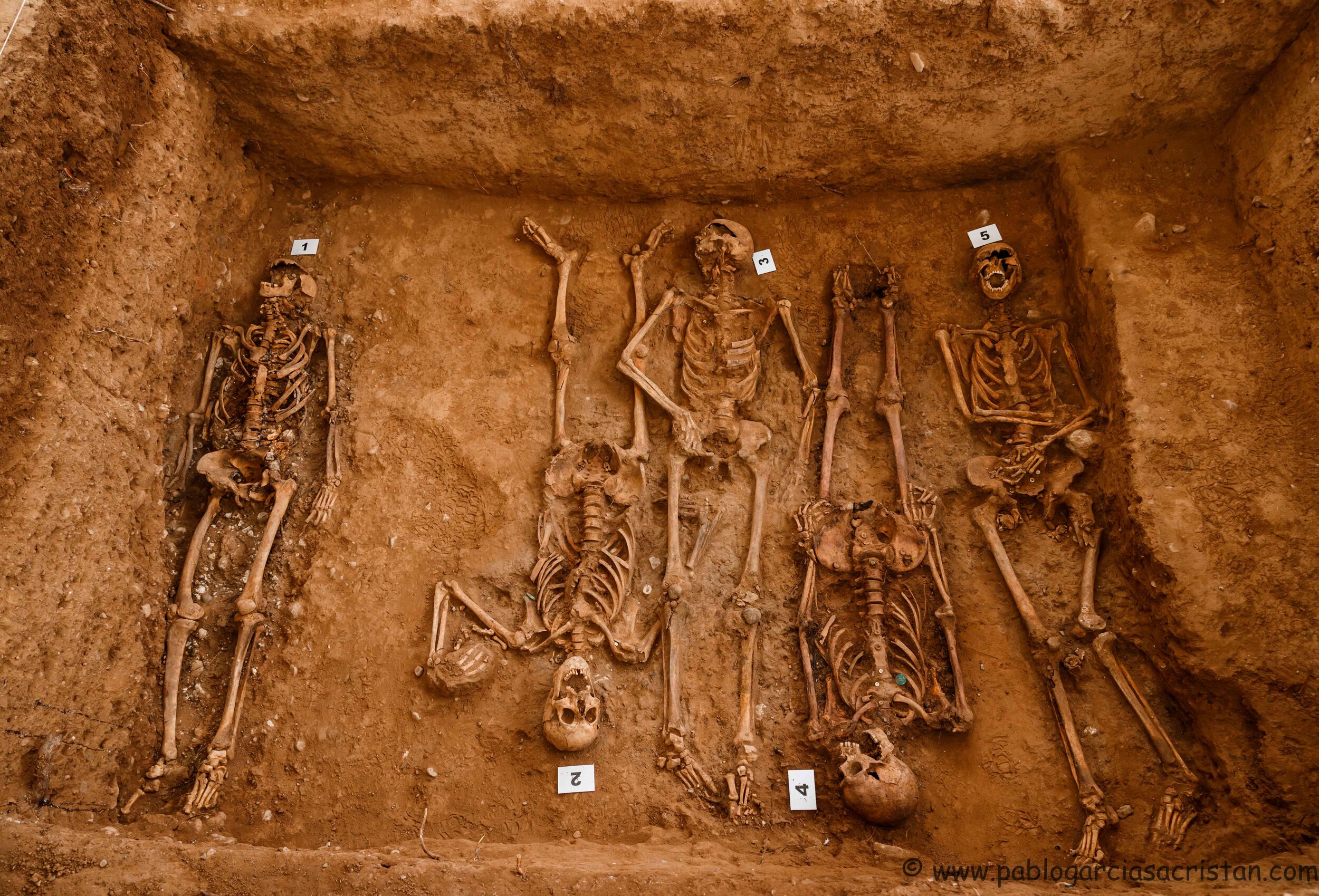
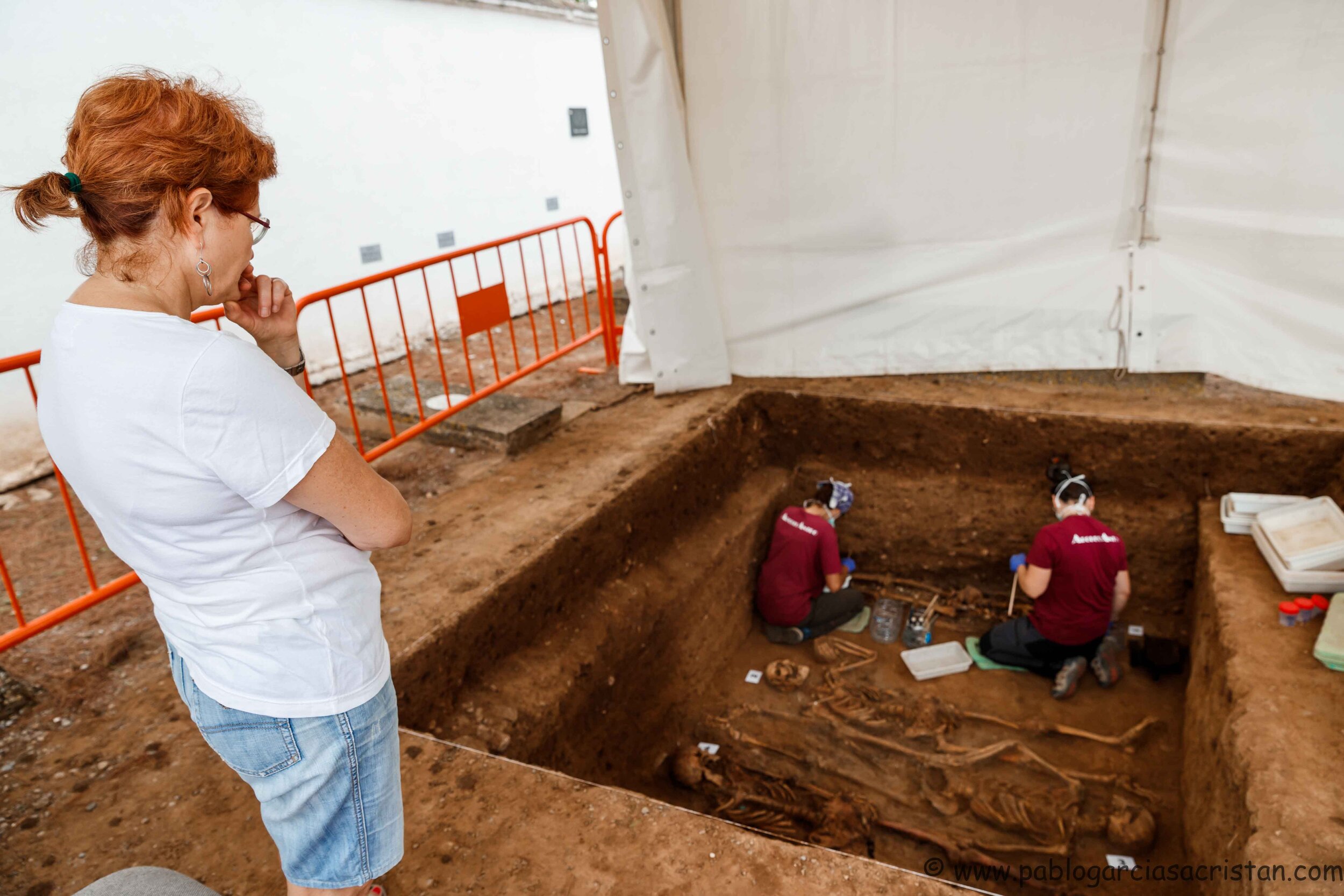
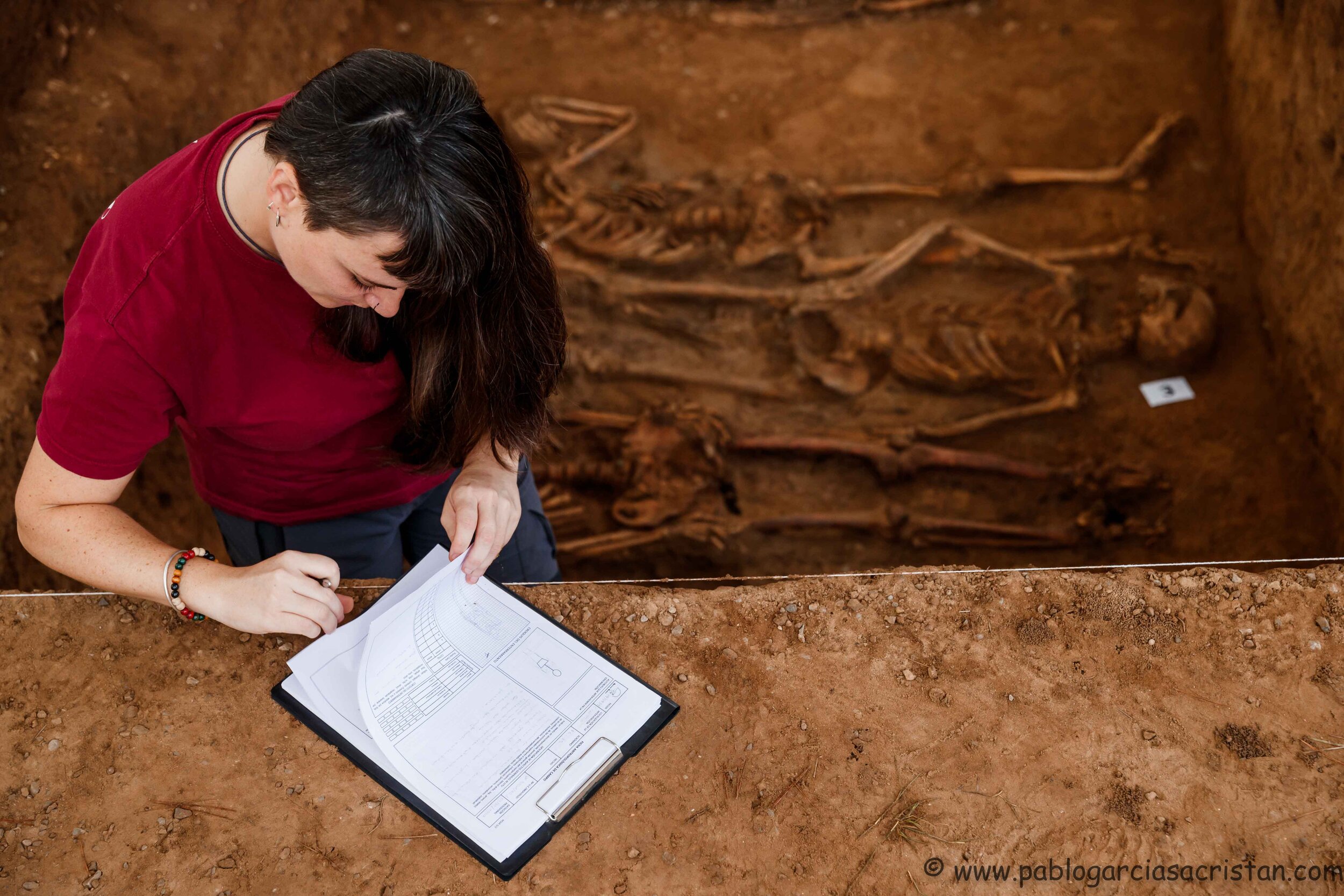

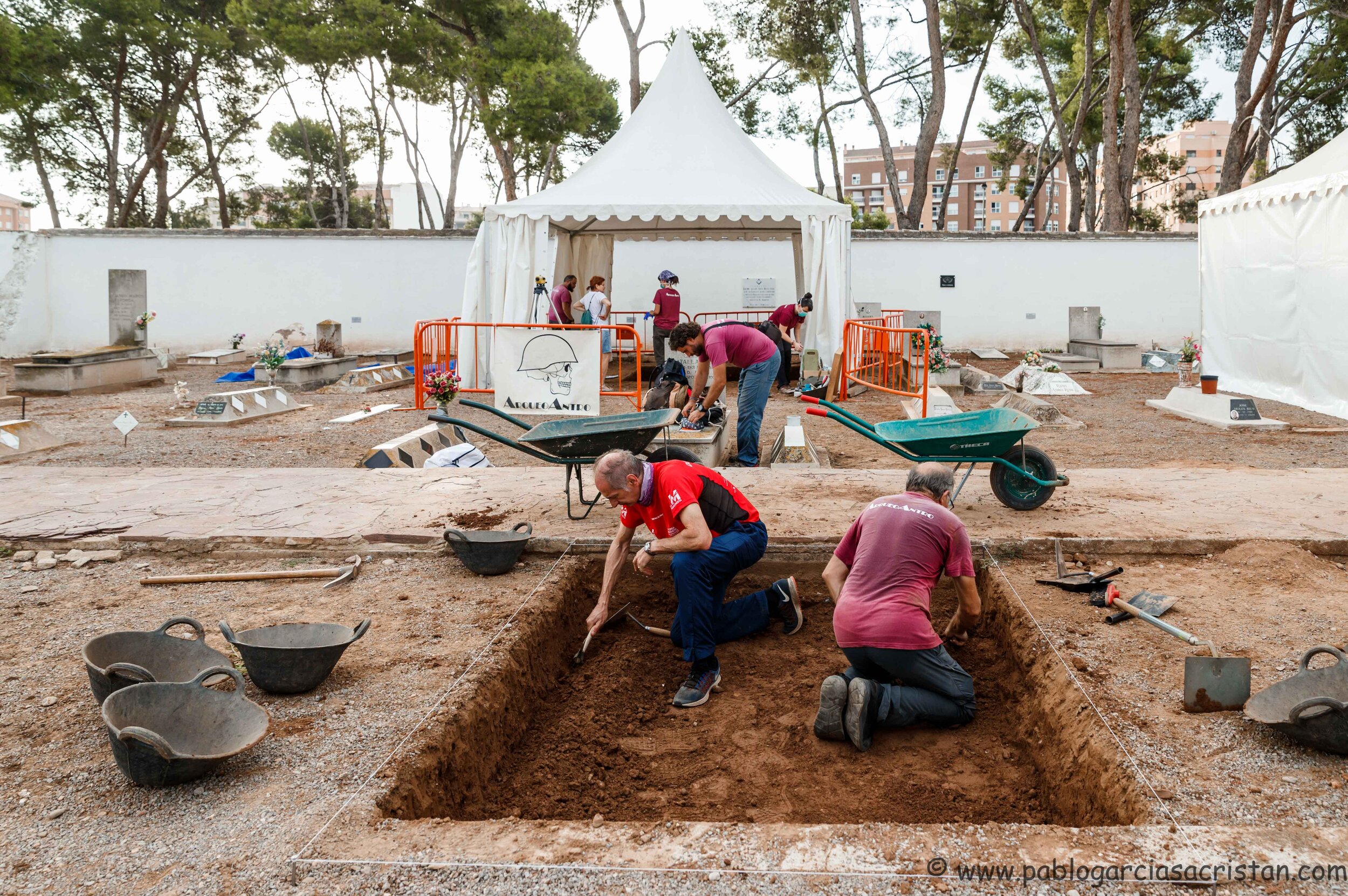
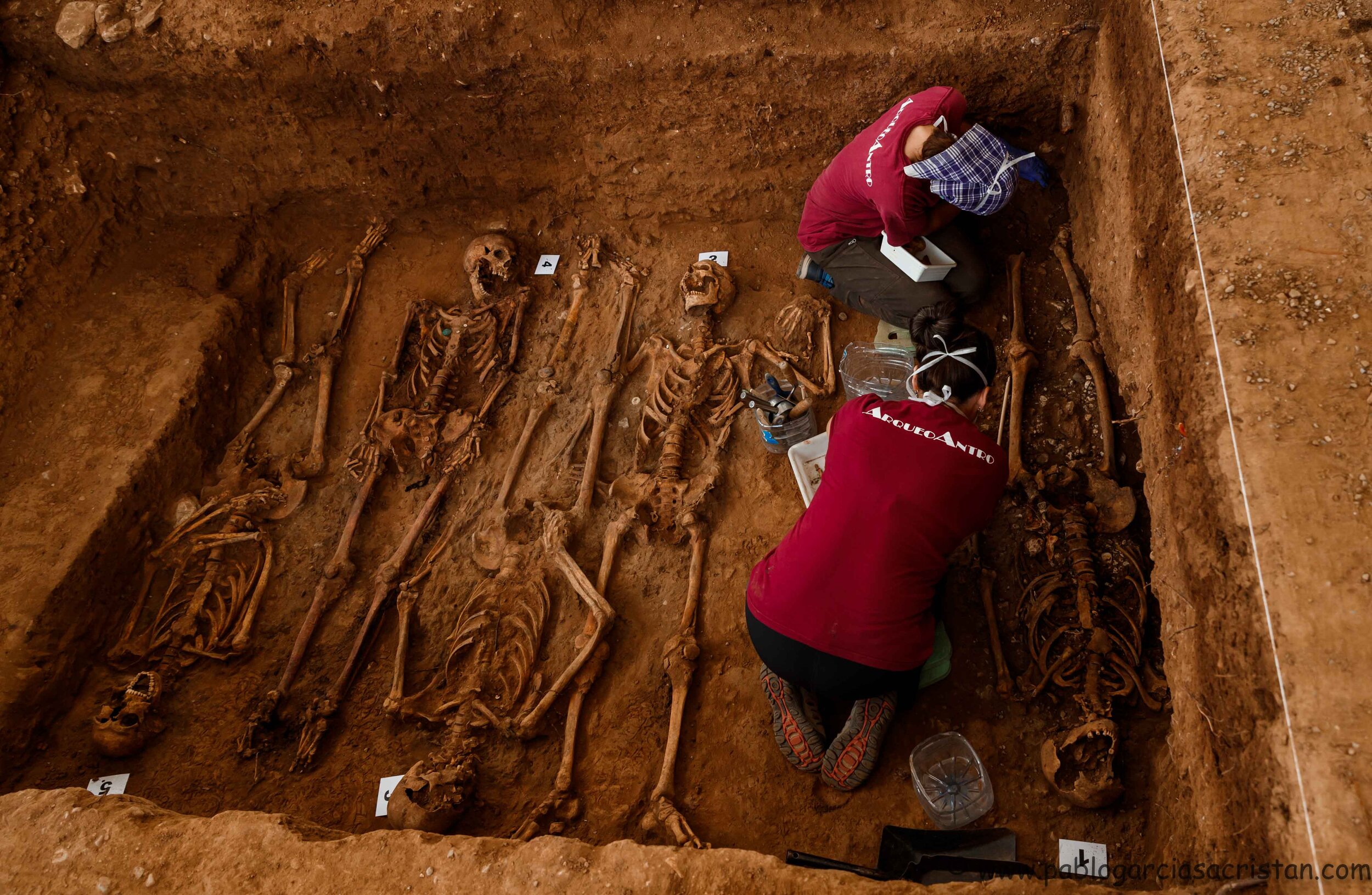


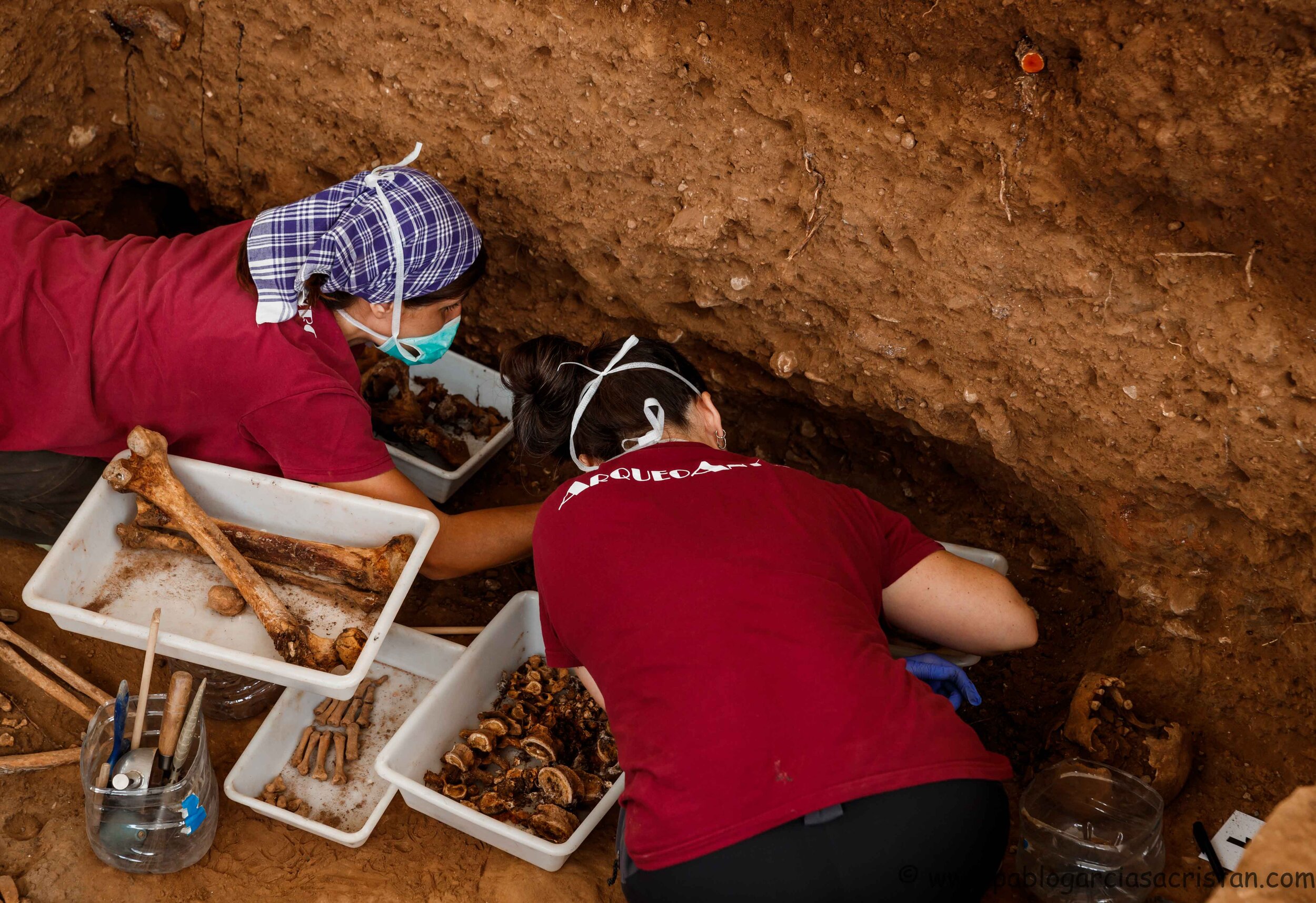
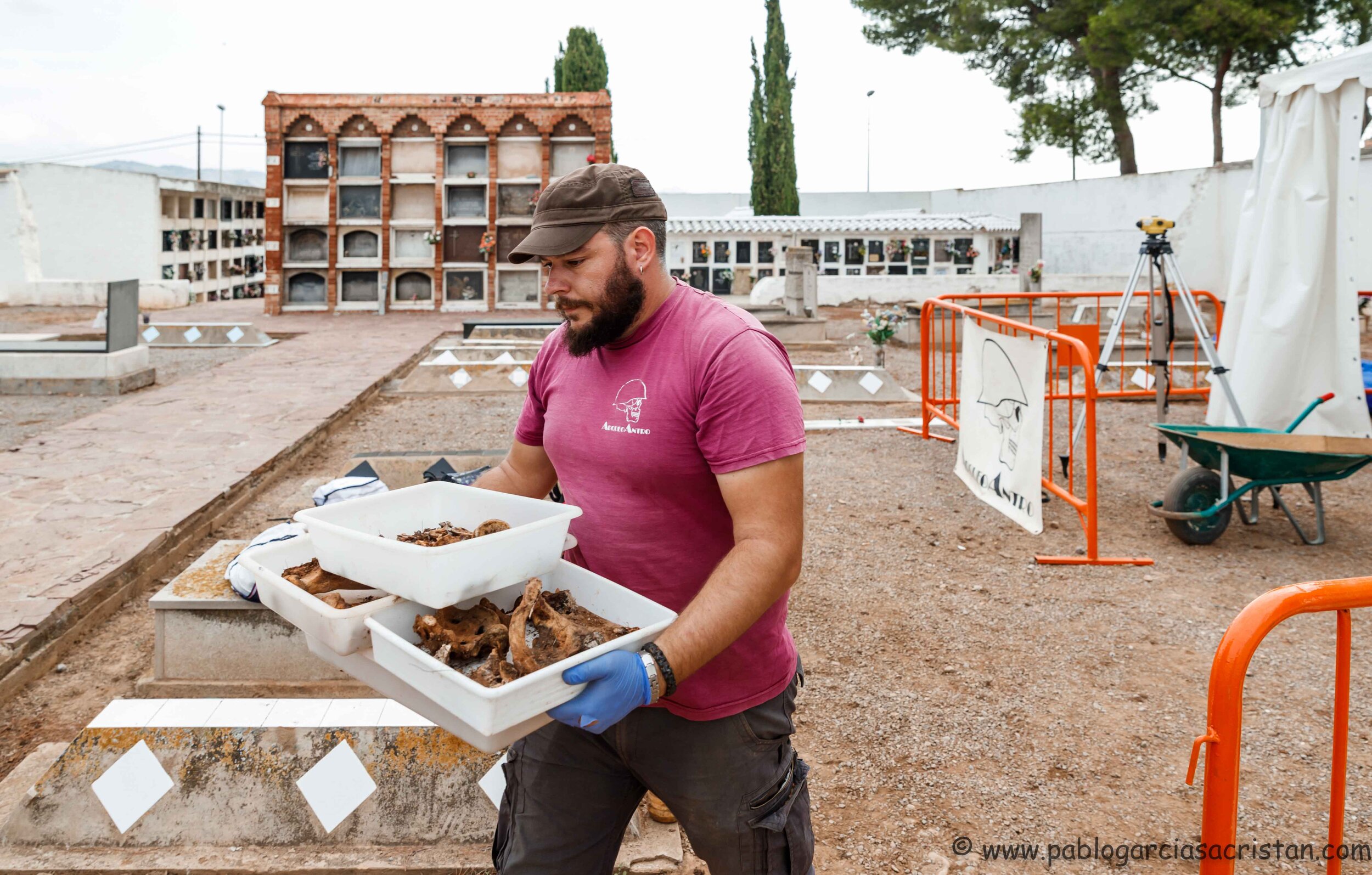
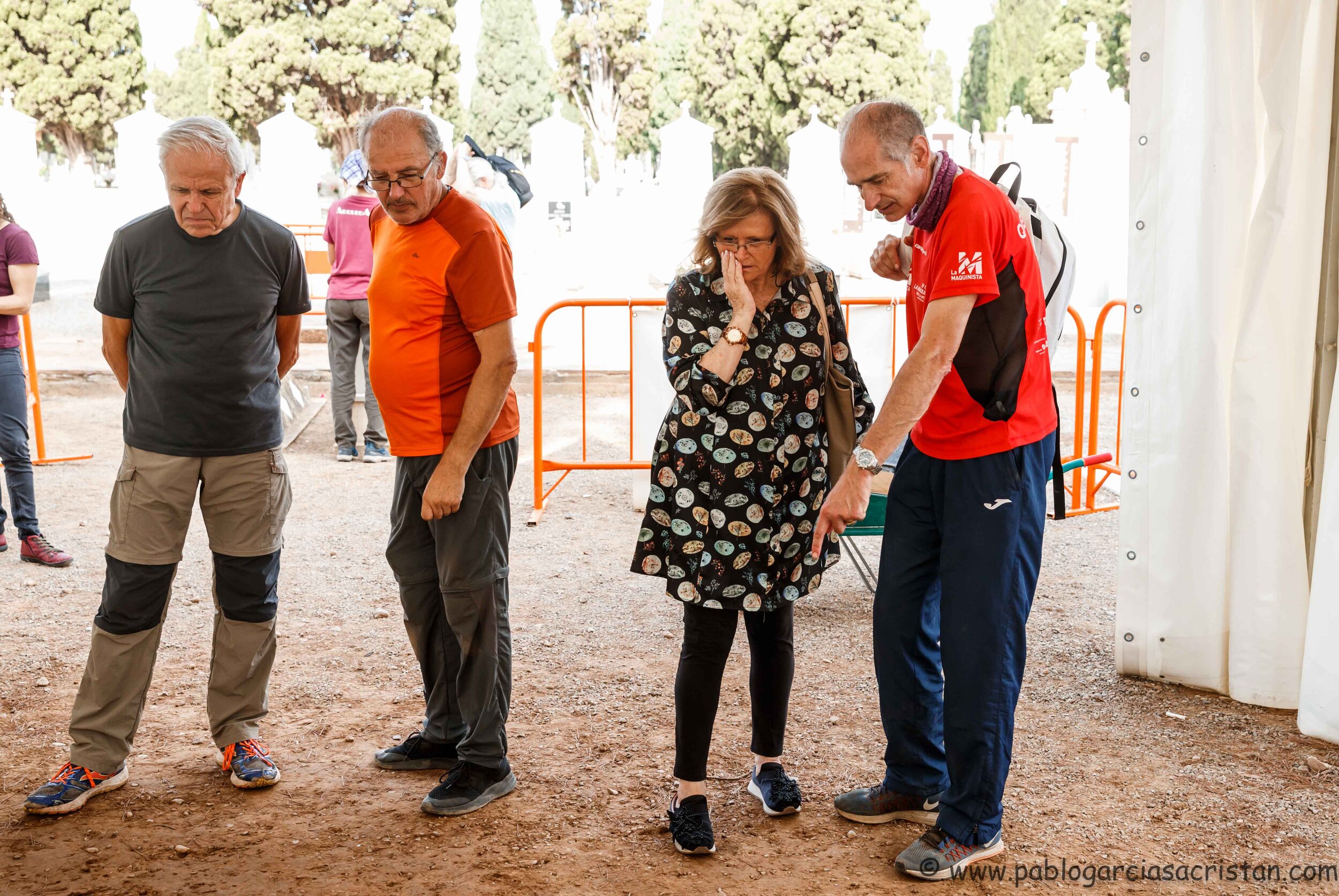
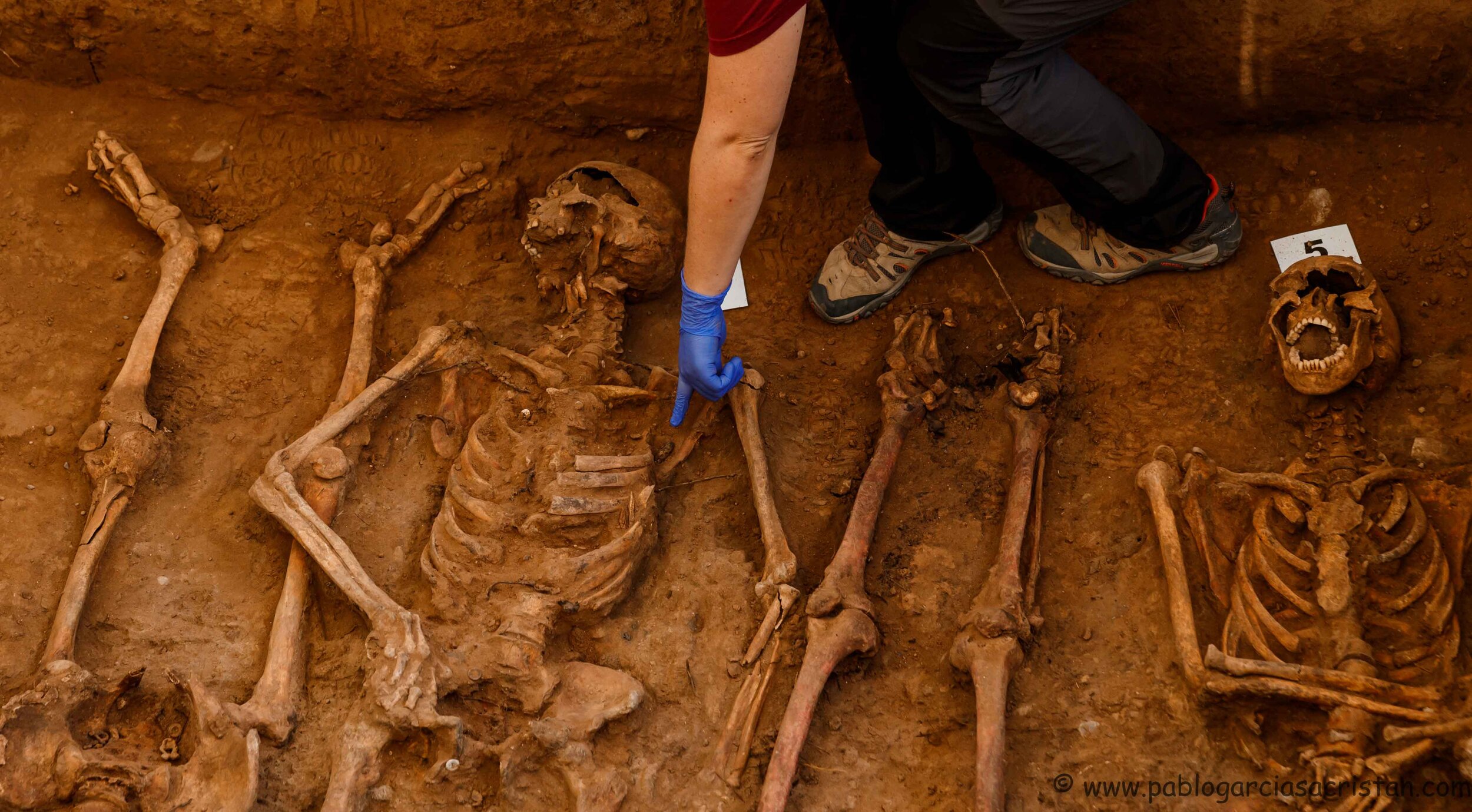
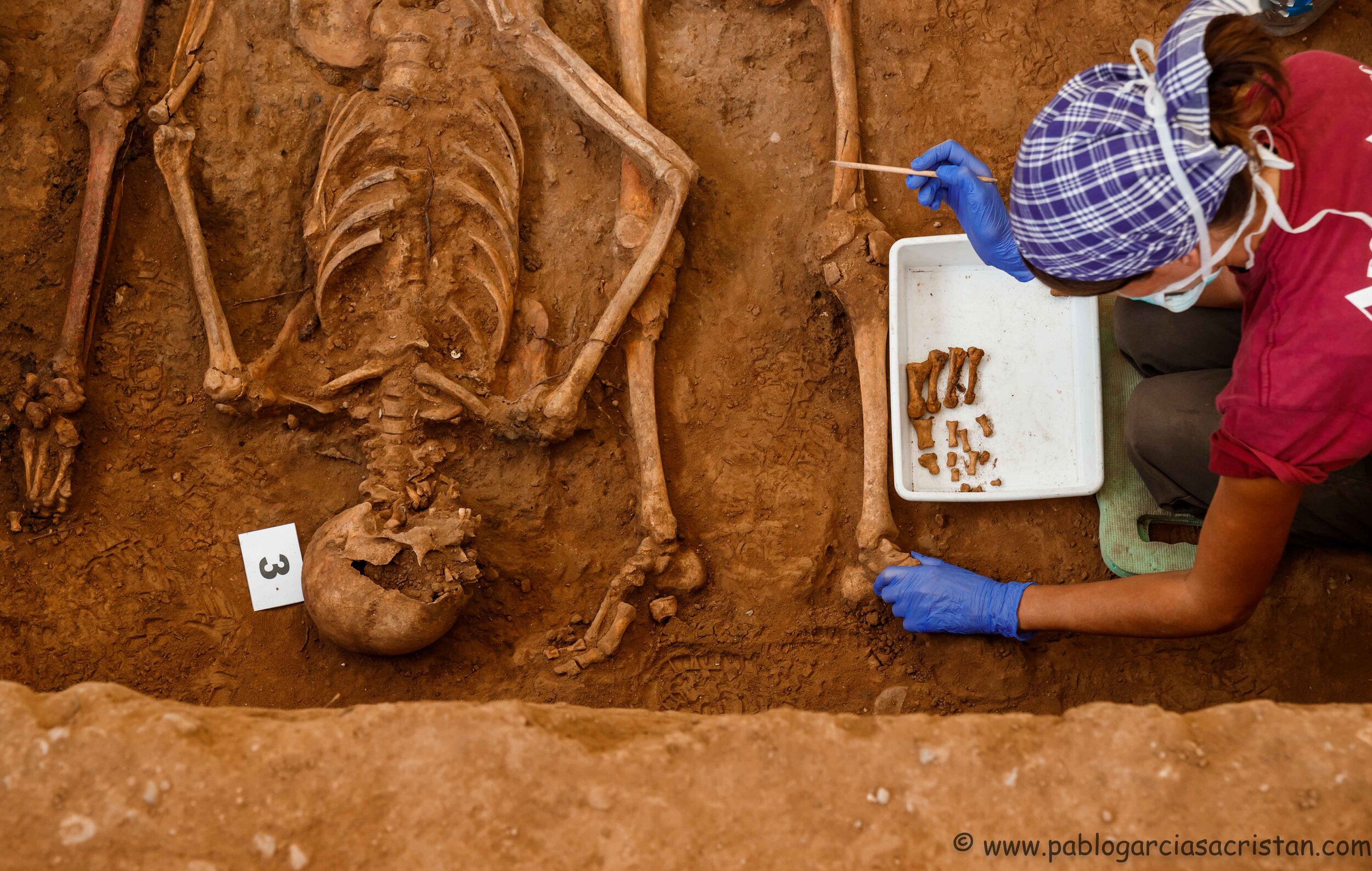
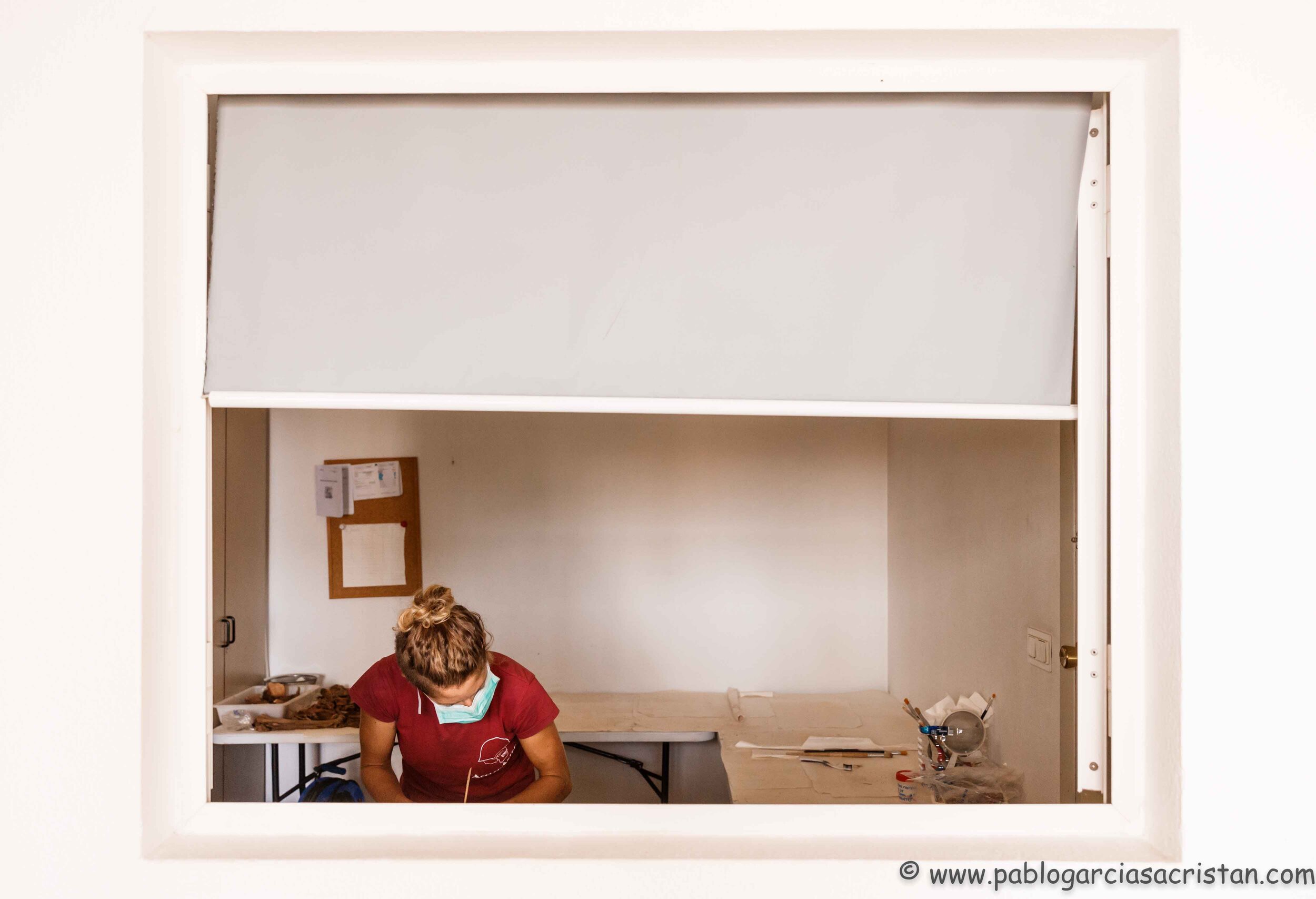
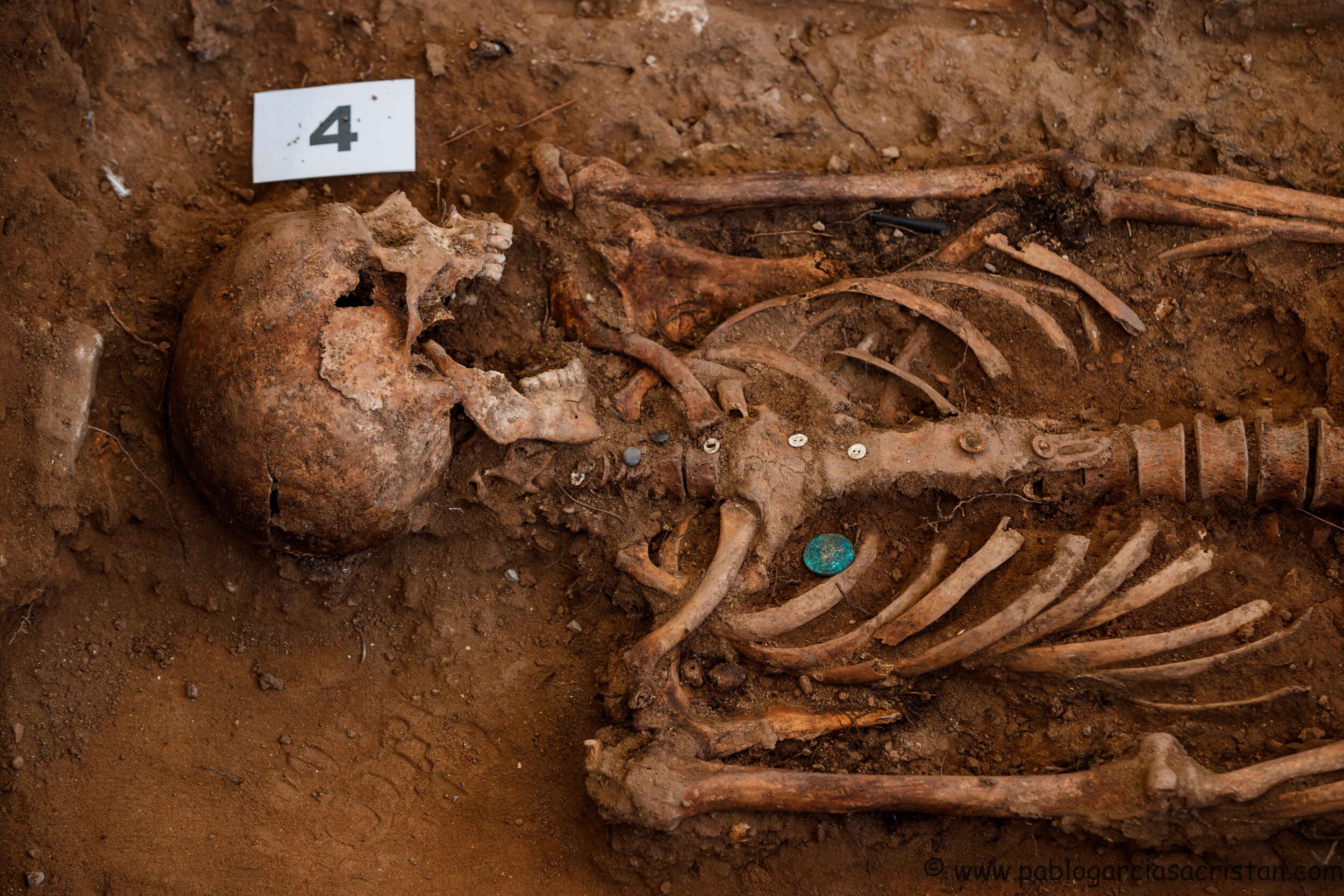
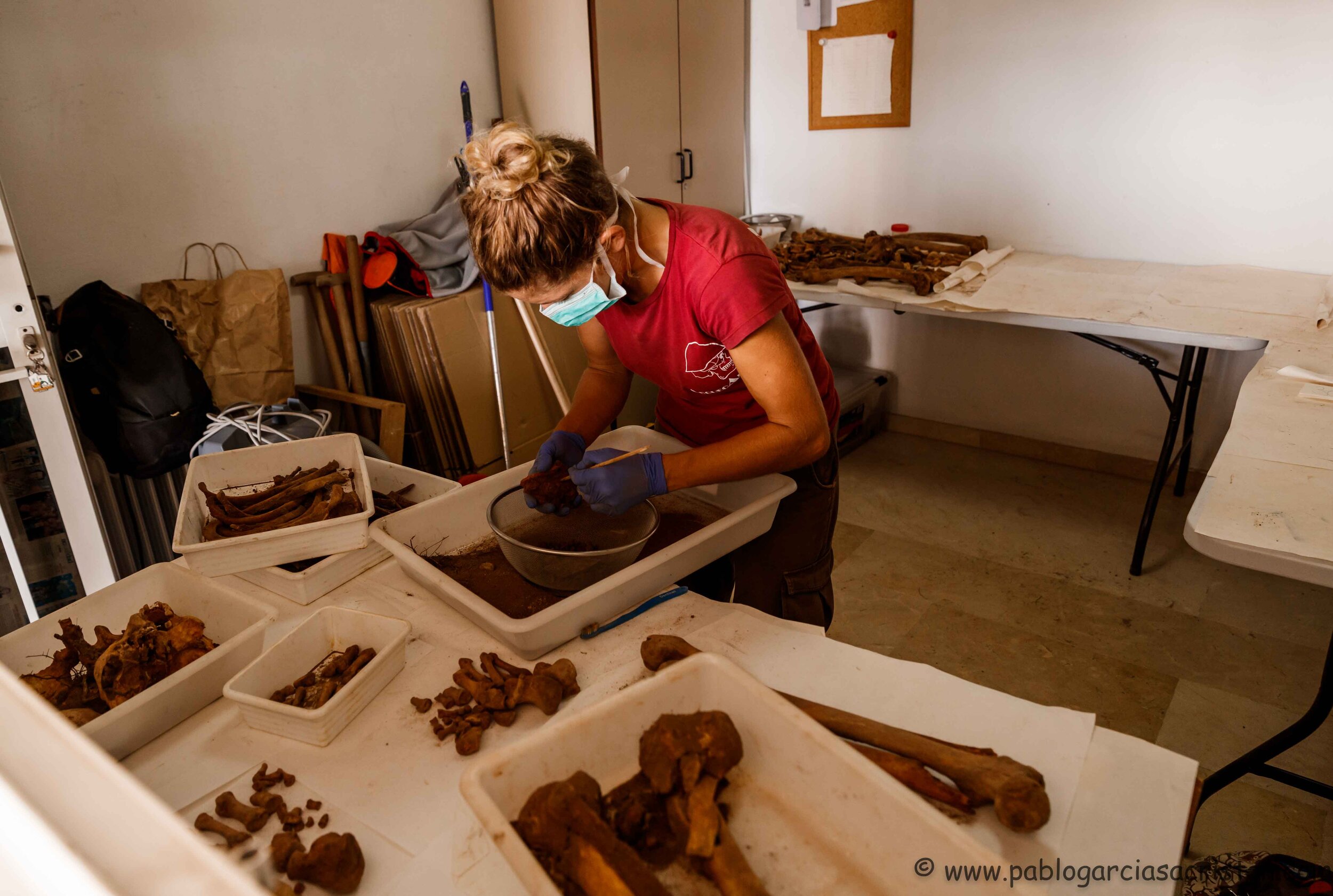
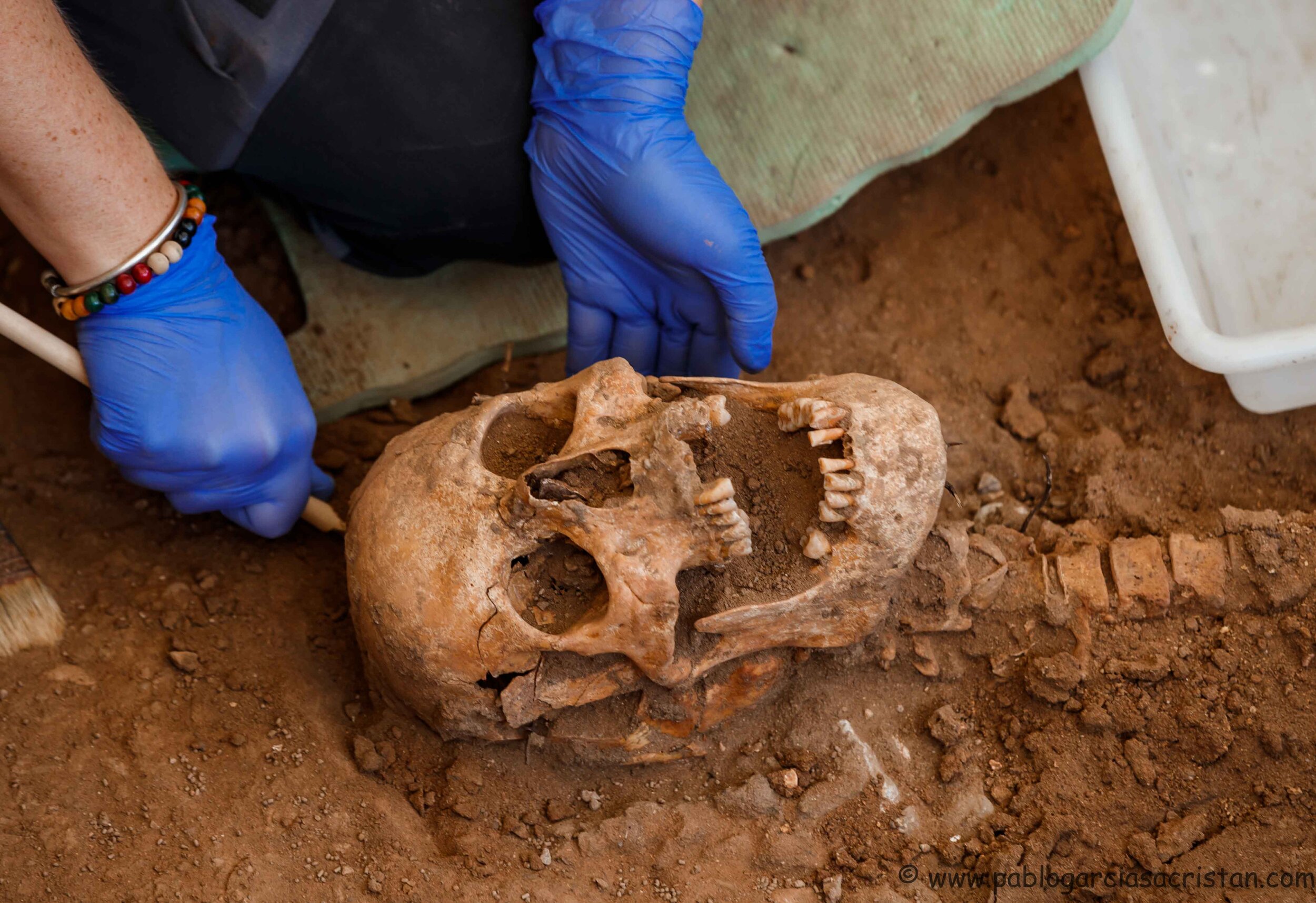
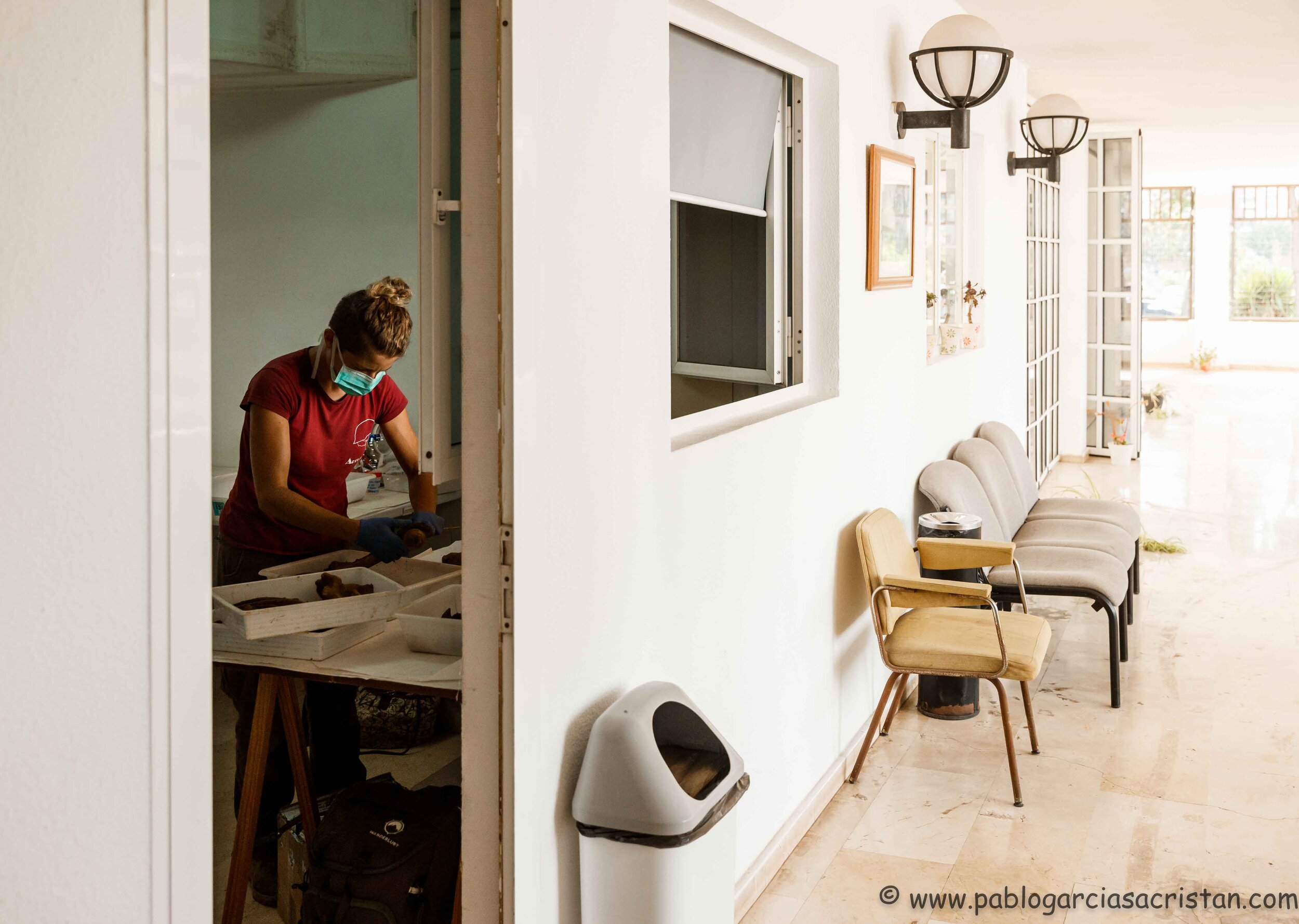
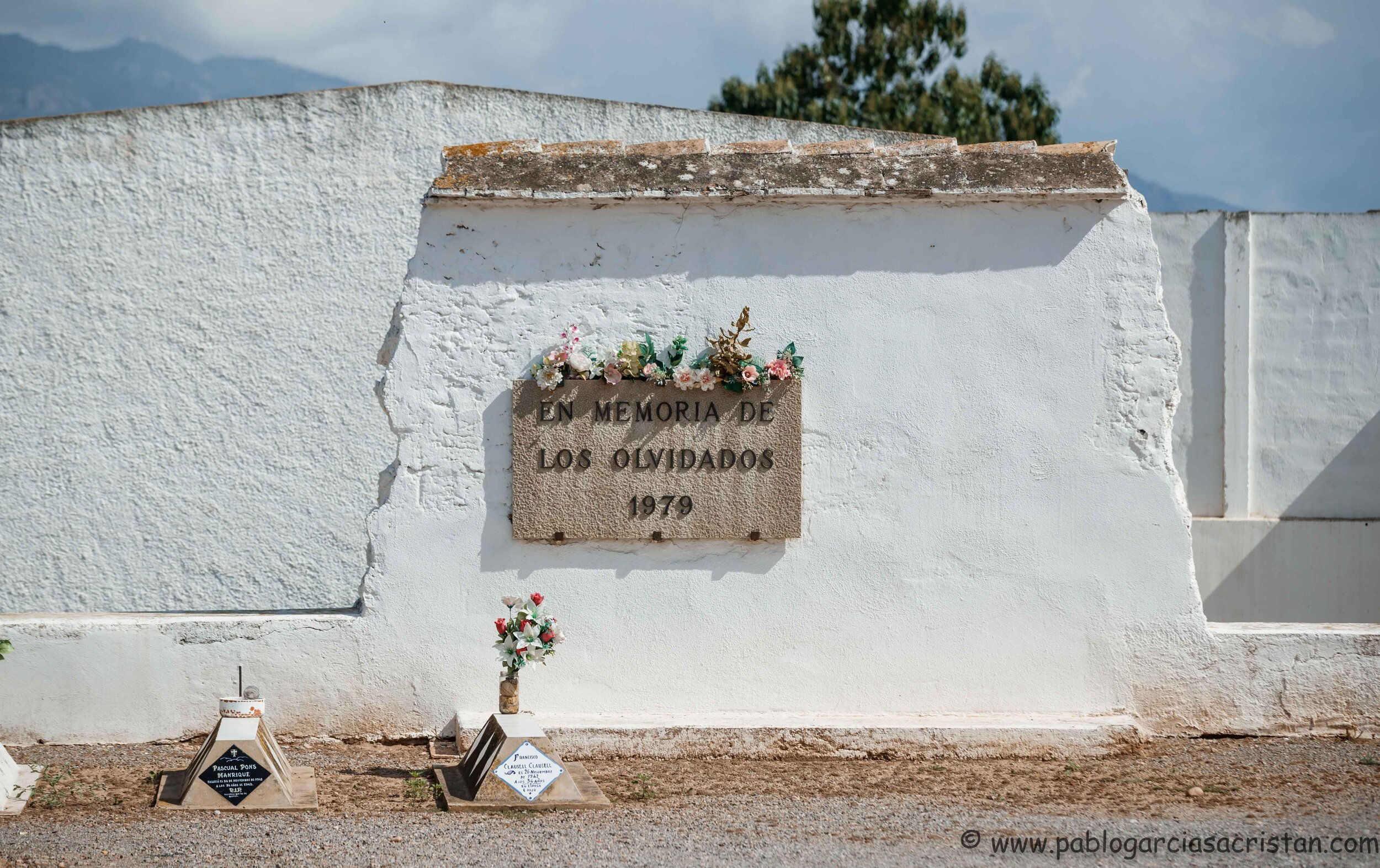
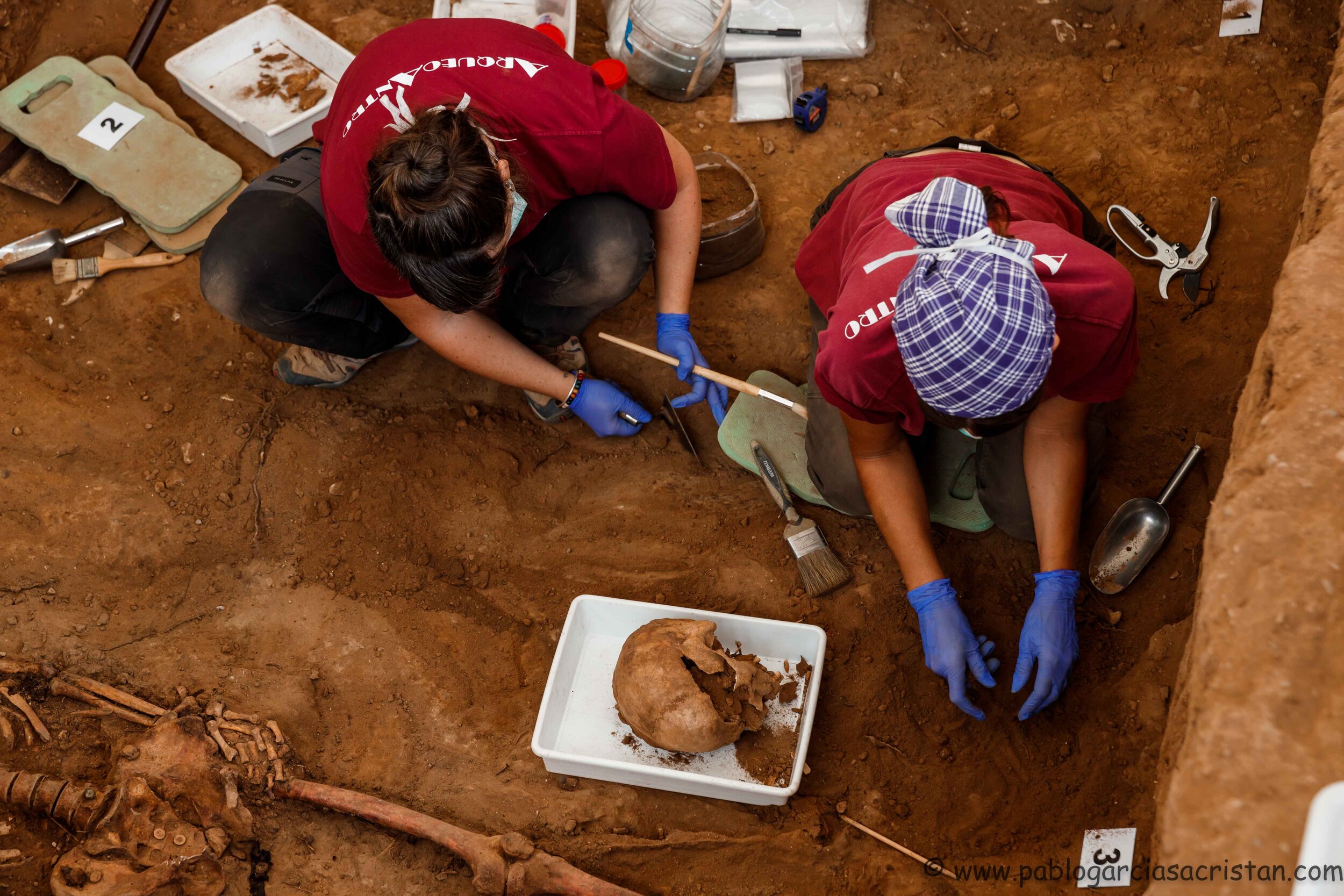
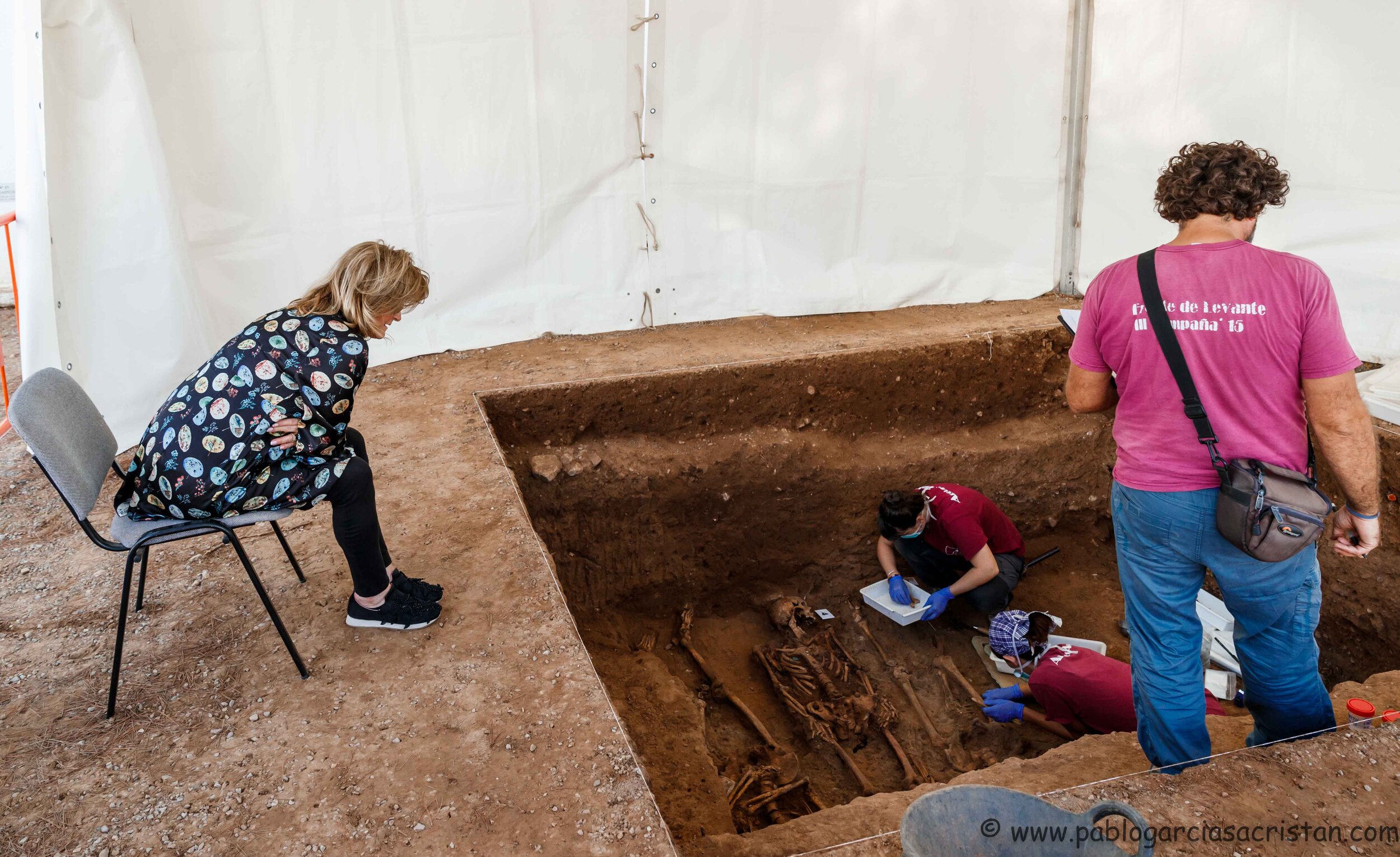
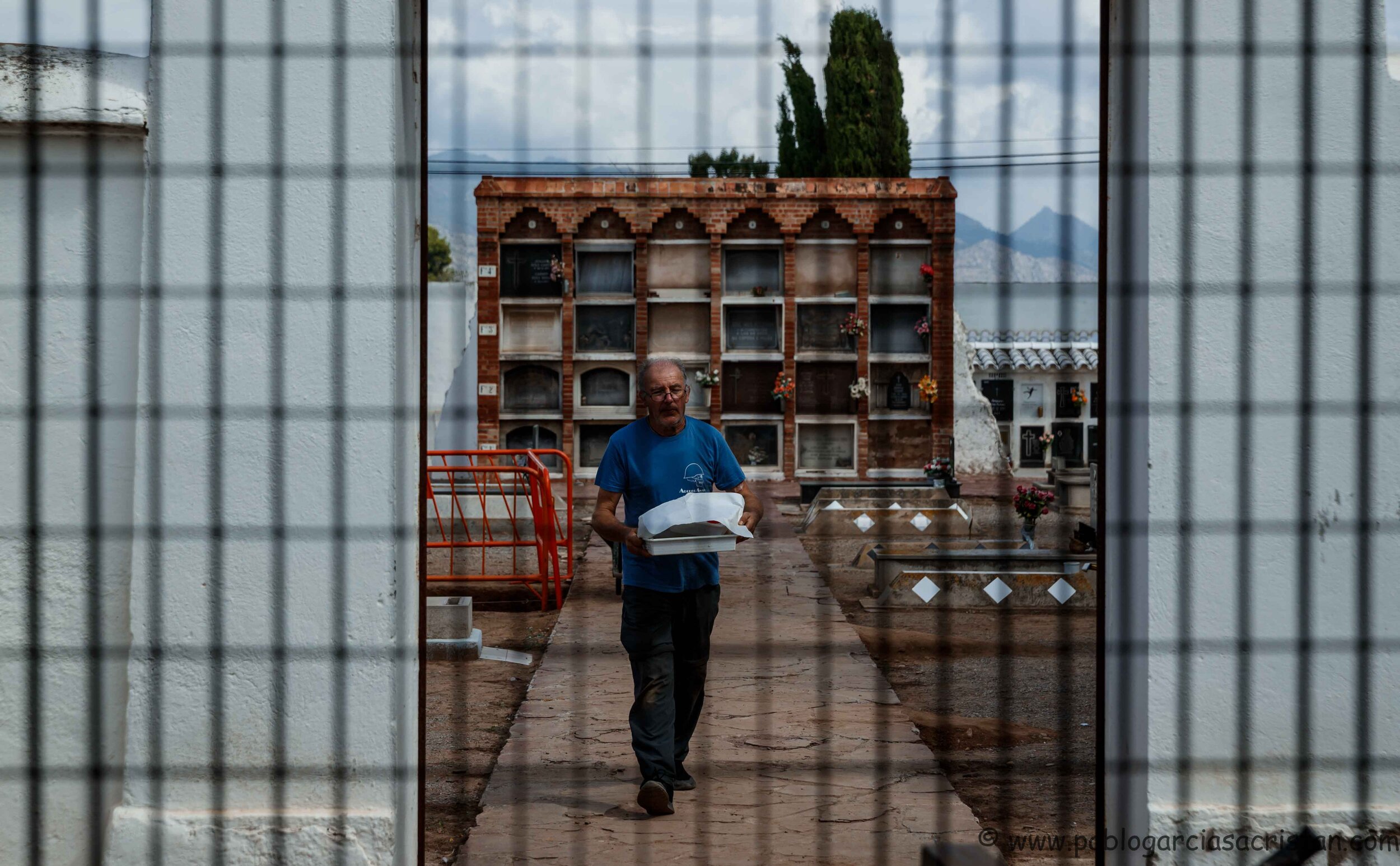
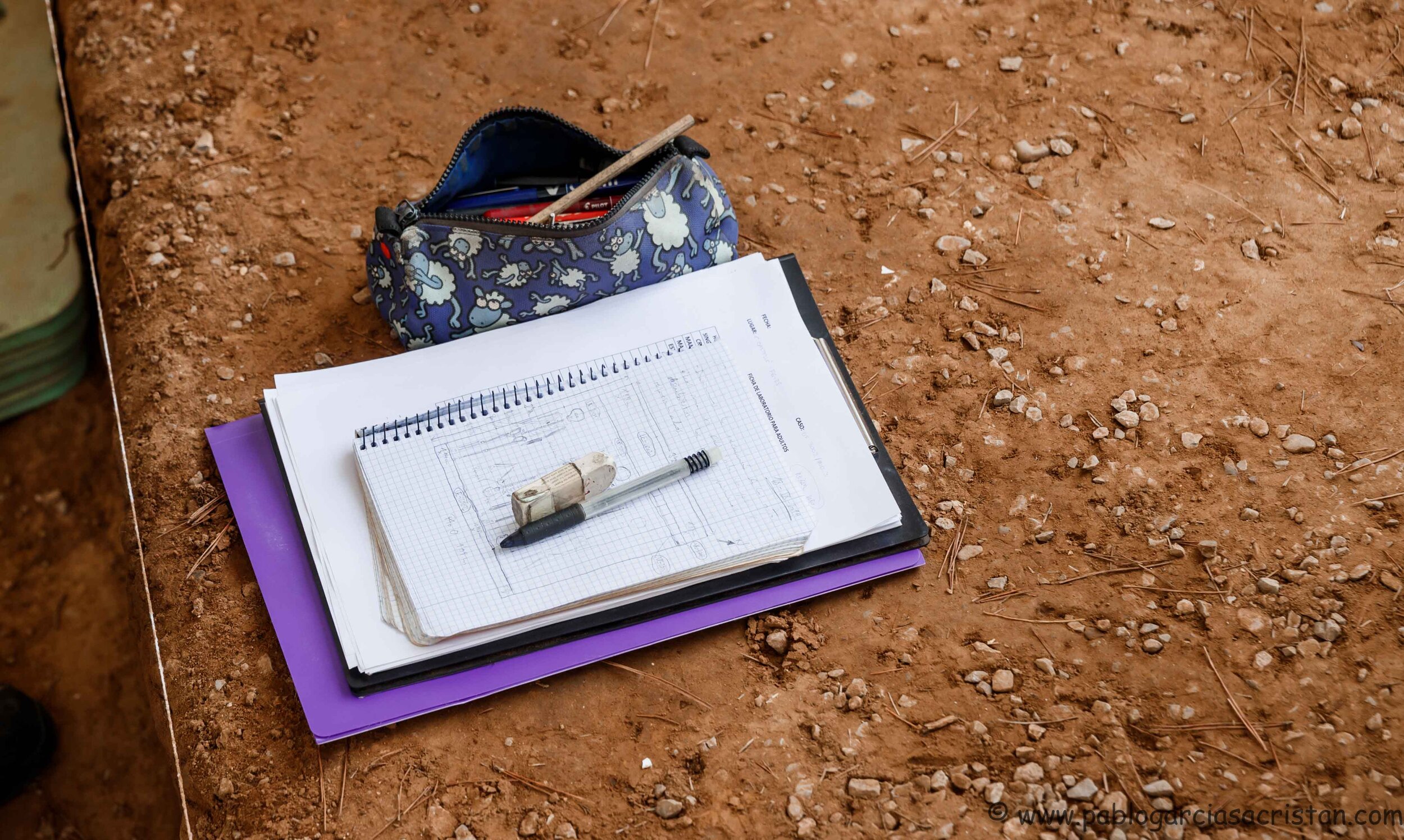

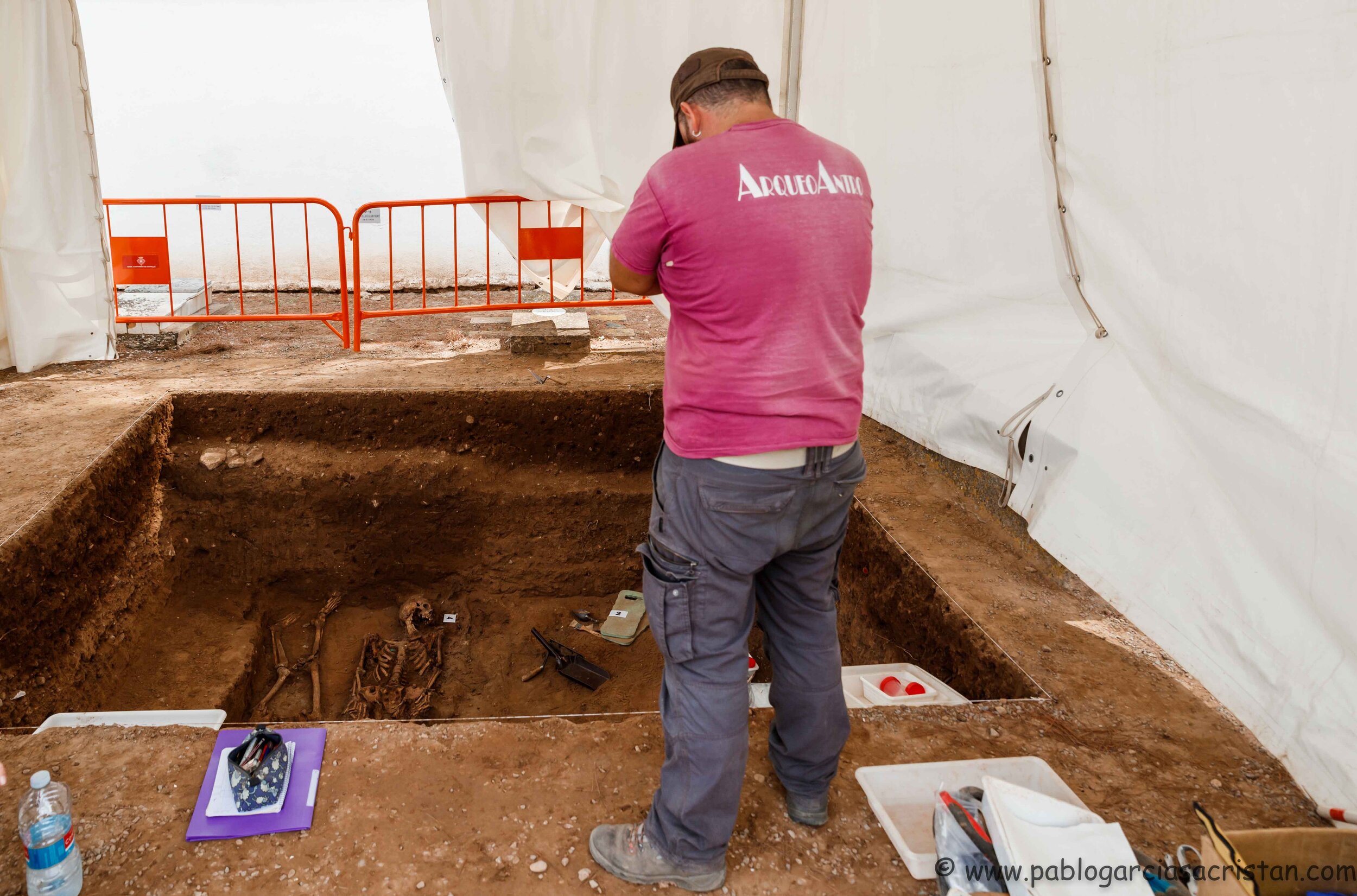

En el cementerio civil de la ciudad de Castellón de la Plana, se encuentran enterrados en fosas comunes y zanjas a una distancia entre 70 centímetros y 1 metro de profundidad un total de unos 1000 cuerpos de personas fusiladas al termino de la guerra civil por el ejercito de Franco. Todas esas personas eran fusiladas en el Rio que pasa por el centro de la ciudad y tiene el nombre de Rio Seco.
Gracias al enterrador del cementerio que las tropas franquicias llevaban los cuerpos amontonados, él pudo enterrarlos y documentar la fecha de sus entierros con la posición el nombre y el lugar donde los enterró en las diferentes fosas comunes. Ese archivo se ha conservado hasta el día de hoy y ha resultado de gran valor para poder identificar cada uno de los cuerpos que se han ido exhumando y poder entregárselos a sus familias.
En tan dura labor participa el grupo de arqueólogos Arqueoantro que son los que están haciendo las excavaciones tanto en este cementerio como en el de Paterna, en la ciudad vecina de Valencia.
Para ello también cuentan con la colaboración de muchos familiares que vienen desinteresadamente a colaborar y ayudar como voluntarios en las excavaciones, como el caso de Daniel, que su abuelo fue fusilado y se encuentra en la fosa 128 del cementerio de Paterna y cada día recorre los más de 80 kilometros que separan su casa del cementerio de Castellón para ayudar en cualquier trabajo.
Rosa Maria, es la nieta de Vicente Ballester Forcada, fusilado a los 35 años por ser miembro de la CNT y tener ideas de izquierdas, el día 7 de mayo de 1940, Vicente fue el primer fusilado de ese día en el que asesinaron a 12 personas. Por eso su nieta con el informe del enterrador de aquella época sabe el lugar exacto donde enterraron a su abuelo en la fosa. Justo hay un espacio que separa a los 4 fusilados del día anterior.
La mujer de Vicente, la abuela de Rosa Maria, falleció a los 102 años con la pena de no haber podido enterrar nunca a su marido, y por fin su nieta, después de 40 años de democracia ha conseguido una mañana de septiembre de 2019 ver los restos de su abuelo fusilado por pensar de manera diferente y del que todavía se conservaban los botones de la camisa que llevaba puesta ese día.
In the civil cemetery of the city of Castellón de la Plana, they are buried in mass graves and ditches at a distance between 70 centimeters and 1 meter deep a total of about 1000 bodies of people shot at the end of the civil war by the army Franco. All these people were shot in the river that passes through the city center and has the name of Rio Seco.
Thanks to the burial of the cemetery that the franchise troops carried the bodies piled up, he was able to bury them and document the date of their burials with the position the name and the place where he buried them in the different mass graves. This file has been preserved to this day and has been of great value to be able to identify each of the bodies that have been exhumed and be able to deliver them to their families.
In such hard work the group of archaeantro archaeologists participates that are those who are doing the excavations both in this cemetery and in the one of Paterna, in the neighboring city of Valencia.
For this, they also have the collaboration of many relatives who come unselfishly to collaborate and help as volunteers in the excavations, such as Daniel's case, that his grandfather was shot and is in pit 128 of the cemetery of Paterna and every day he travels More than 80km separating your home from the Castellón cemetery to help with any job.
Rosa Maria, is the granddaughter of Vicente Ballester Forcada, shot at age 35 for being a member of the CNT and having ideas of the left, on May 7, 1940, Vicente was the first shot of that day in which they killed 12 people. That is why his granddaughter with the report of the undertaker of that time knows the exact place where his grandfather was buried in the grave. There is just a space that separates the 4 shot of the previous day.
Vicente's wife, Rosa Maria's grandmother, died at 102 years with the pain of never having been able to bury her husband, and finally her granddaughter, after 40 years of democracy she has managed to get a morning in September 2019 see the remains of his grandfather shot for thinking differently and that the buttons of the shirt he was wearing that day were still preserved.
Pablo García
Castellón
Septiembre de 2019.
